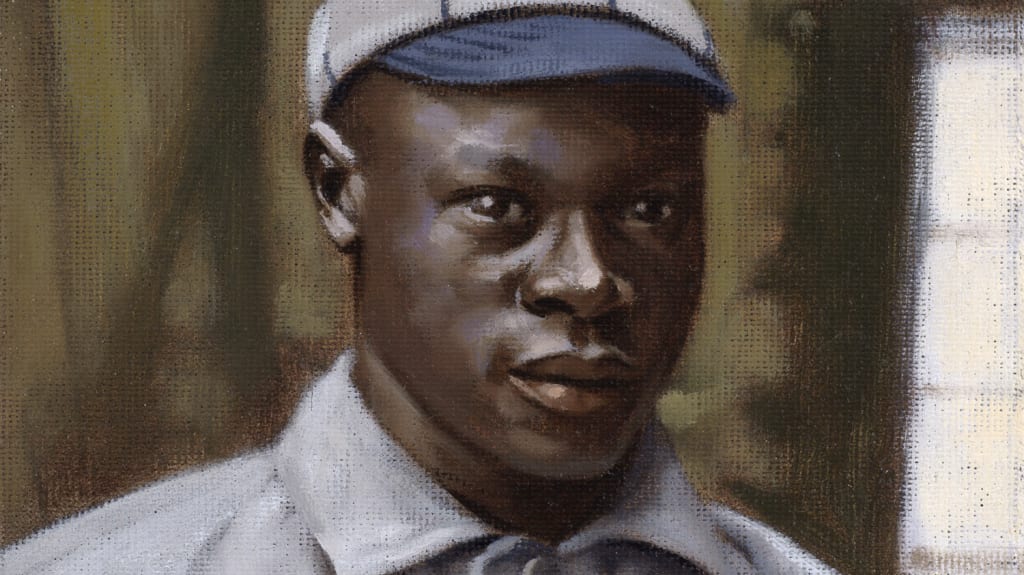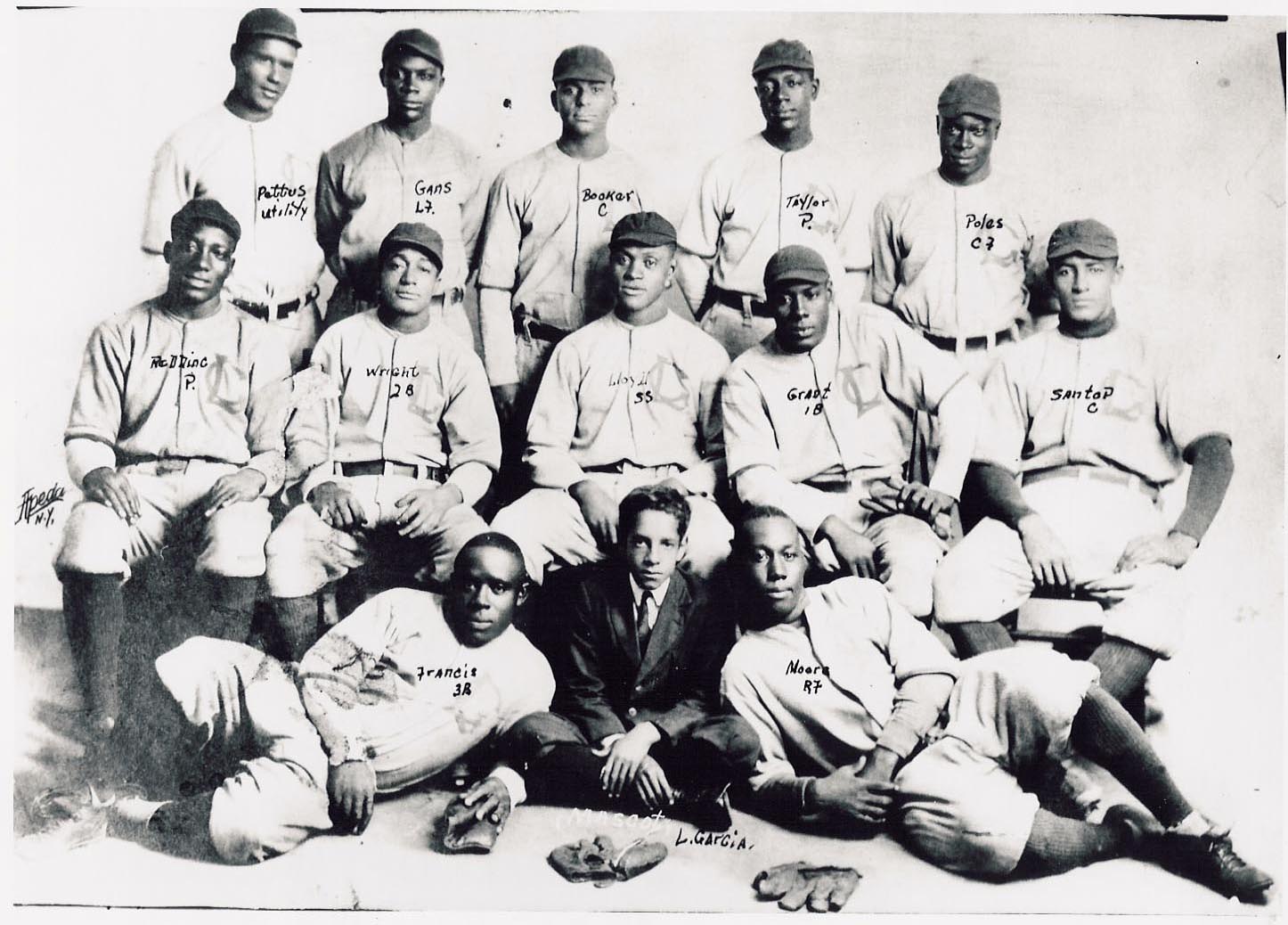
This story was originally published in January 2022.
"Spot is a tremendous story," Bob Kendrick, President of the Negro Leagues Baseball Museum, told me in a phone interview. "We need to bring him to life for people who undoubtedly have never heard the name."
Part of the reason why people have probably never heard the name Spottswood Poles (a fantastic one on its own), is because of when and where he played the game: Born on Dec. 27, 1887, Poles began his career in 1909 and finished it in 1923. The majority of his playing days took place before the more organized Negro National League was developed in 1920 -- a time before stats and achievements were a bit more organized, before there were any playing peers alive to talk about him.
"[Poles] doesn't get the same level of attention that, perhaps, those Negro League players from the '30s and '40s got," Kendrick said. "Because when Negro Leagues history kind of came in vogue, so to speak, you had it through the lens of the likes of Monte Irvin and Buck O'Neil, guys who played in that era who spoke so glowingly about their contemporaries. You didn't have anybody left to talk about those early-era Black baseball players."
But like other pre-Negro National League players such as John Donaldson and Cannonball Dick Redding, Poles was a legend. He played everywhere he could latch onto -- joining Pop Lloyd and the Philadelphia Giants in 1909, teaming up with Smokey Joe Williams on the New York Lincoln Giants in 1913 and starring with Redding on Atlantic City in 1919. And although it's hard to totally tabulate his exact numbers, nearly every story or available stat sheet recognizes him as a fantastic hitter, his career average somewhere in the .300-.400 range. SABR researcher John Holway has Poles batting .440 in 1911, .364 the following season in Cuba and an incomprehensible .487 in 1914.

And not only did Poles dominate against Black pitchers, he also, in limited at-bats, did so against white Major League pitching. He reportedly faced big leaguers 41 times in his career and got 25 hits. That's a ridiculous .610 average. In the fall of 1913, playing exhibition series against MLB teams, the 5-foot-9 leadoff batter got three straight hits off Hall of Famer Grover Cleveland Alexander and five against George Chalmers.
"He lit Major League pitching up," Kendrick said. "These were documented games; he played Major League All-Star teams that were pretty well stocked with talent. Spot didn't discriminate on who he lit up -- he lit everybody up."
But what most people stress when they talk about Poles is his speed.
"Any time you draw comparisons to the speed of Cool Papa Bell, we know you're fast," Kendrick said. "Some believe he may have even been faster."
Bell, as many baseball fans may know, has always been considered the fastest player in Negro Leagues history -- and perhaps the fastest to ever step onto any baseball field anywhere. There are stories of him getting hit by his own line drives sliding into second base or outrunning the speed of light. Of course, Bell -- now a Hall of Famer -- started his career 12 seasons later than Poles, in the prime of the Negro National League. His numbers were more accurately recorded, his stories more readily reported.
Still, there are anecdotes to back up Poles' legendary quickness. Reporters who covered his career abroad and in the U.S. referred to him as "the Black Ty Cobb." Poles once ran a 100-meter race in less than 10 seconds. Negro Leagues All-Star pitcher Sam Streeter, who saw both Bell and Poles play and thought Poles was faster, talked about a time facing 36-year-old Spot:
"He hit that ball on one hop right back to me," Streeter said. "It was straight, just like a line drive. I turned to throw to first, and he crossed first before the ball got there."
According to Seamheads, Poles' Major League similarity scores can be compared to elite speedsters like Lou Brock and Ichiro Suzuki.
Poles even missed a year of his prime, signing up to fight in World War I at the age of 30 after the 1917 season. And he did it in the face of a country that refused to fight beside him: The U.S. didn't allow Black men to serve with them at the time, so he, and thousands of other Black soldiers, fought bravely for France in the 369th Infantry -- a group famously known as the Harlem Hellfighters. He earned five battle stars and a Purple Heart for a regiment that spent more days on the frontline and lost more people than any other on the Allied side.
"Yeah, for me, his story is more than just baseball. We're talking about a great American," Kendrick told me. "You had these Black soldiers who were fighting for a country that wasn't fighting for them. And they still wanted to fight. The primary reason they wanted to fight was to prove that they were American. Even though they were being treated as un-American as anyone, there was this constant quest to prove that they belonged here. ... When you add that dimension to a storied baseball career, Spot Poles is a name that we should all know."
Poles rejoined the Eastern Independent League once he got back from overseas and did what he always did: He hit. The 32-year-old batted .294 between two teams in 1919, then hit .333 in 1920, .394 in 1921 and .368 in 1922. Poles retired from most competitive baseball after the 1923 season, not because he couldn't swing the bat any longer, but because he "got tired of all the train travel and carrying those bags around all the time."
Poles remains an eligible Hall of Fame candidate through Cooperstown's Eras Committee process. His case will be considered when the Early Baseball Era meets next, currently scheduled to take place in December 2031 as part of the Class of 2032. Hall of Fame manager John McGraw notably named Poles as one of four Black players he would've signed if MLB had allowed it -- along with Redding, Smokey Joe Williams and Pop Lloyd.
Poles, a humble American war hero and one of the great outfielders of his time, had a simple answer when asked about never playing in the Majors.
"Maybe old Poles was born before his time," he said. "I never had a chance."
